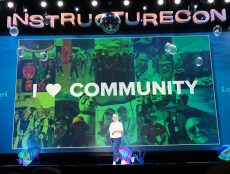
Few would deny that education is the great equalizer; as a society, we have embraced the concept of education for all.
What we haven’t yet figured out is the idea of equitable education for all — the key to giving all learners the skills they need to be successful, engaged, and productive.
What’s taking us so long? What’s in the way? How do we clear the path?
Defining the Gap
Long before the pandemic turned the world upside down, our system and students were already fragile. Worse, many of us had accepted it.
Learning in the time of COVID-19 has given us an up-close view of the successes and failures of modern education, underscoring something we already knew — students’ success requires social and academic support. And that support is unevenly distributed.
The COVID-19 pandemic has disproportionately affected racialized communities and those who provide essential services. Inequities in education are further exacerbated because of this. How we support students must demonstrate our commitment to equity and success for all we serve.
— Christopher Usih (@UsihChristopher) May 2, 2021
The National Center for Education Statistics (NCES) confirms that low income, first generation and minority students are not privileged with the same level of preparation and support that leads to equitable success in education. For example, this NCES study shows that low-socioeconomic status (SES) students have been less likely to complete their college education. Only 14 percent of low-SES students earn a bachelor’s degree or higher within eight years, compared to 29 percent of middle-income students and 60% of high SES students.
Many societal and economic factors contribute, but one of the first lines of defense is in the education itself. It’s about providing better, more accessible, more affordable – more equitable – education. It’s about reimagining the way we have traditionally taught subjects and disciplines to provide solid foundations at the onset and also afford the biggest opportunity for economic mobility. It’s about driving learner outcomes to put achievement within reach for all.
For example, success in gateway math and statistics courses is one of the most reliable predictors of overall college success, yet math remains a significant obstacle to degree completion and equitable outcomes for millions of students, according to the Mathematical Association of America. Research from NCES concurs, showing that many students enrolled in these courses don’t complete them, leading to unmet learning outcomes, derailed career paths, and unproductive debt.
Paving the Road to Success
Now is the time to fundamentally reimagine education that prioritizes accessibility and equity for learners. Technology has the potential to transform what’s possible in education and put achievement within reach for all students. Consider these three pieces of the equity puzzle:
Adaptivity: In addition to high-quality instruction (whether virtual or in-person), high-quality digital adaptive courseware can provide the personalized learning and assessment students need to succeed. Adaptivity allows students to efficiently catch up in areas where they’re behind or are having difficulty learning.
While all students start on the same assigned topic, each path to mastery is unique. As students progress through the course, adaptive courseware pinpoints skills gaps and intervenes with instructional support and prerequisite materials in-line, at the moment of need. This ensures students are mastering foundational skills before proceeding to more complex topics and that the knowledge gained can be practically used.
Affordability: The Pell Institute quantified large and growing differences in the financial circumstances of students in different family income quartiles. Students in the lowest quartile averaged $9,575 in unmet need, while students in the highest income quartile had a surplus of $28,269.
Research shows that tech-enabled content can improve outcomes in subjects like math, statistics, economics, computer science, engineering, and chemistry. Unfortunately, the cost and complexity of these grade-saving tech resources have historically limited their reach. Making this type of courseware affordable, easy to use, and inexpensive to support will encourage students to take classes in these traditionally tough subjects, keep them enrolled and successful in the class, and improve persistence in the degree program. We are making progress in lowering prices, but we have to strive for more.
Accessibility: Student needs are evolving fast. It’s up to us to stay ahead of these demands by enabling robust online learning experiences, accelerating the adaptation of learning and stackable credentials, and promoting the personalization of learning at scale.
Nontraditional learners are now the norm – the average college student being 26.4 years old, many have families, are working part- or full-time, have been in the military, or have returned to school after taking time off to travel the world. Given their many competing obligations, traditional access to higher ed doesn’t work for all learners.
To overcome this roadblock, educators must meet students where they are — on their schedules, in formats that work for them. This often requires an overhaul of courses, policies and hours to accommodate students’ needs and expectations.
Getting from Gateway to Graduate
We’ve been on this journey for a long time, and acceleration is now more necessary than ever. Providing adaptable, affordable, accessible coursework is a must to promote equity.
As learners focus on their own outcomes, they will continue to demand and drive efficient, results-oriented, career-focused education. They don’t have time or money to waste, which means we must enable student success and create on-ramps to the in-demand jobs that will drive our global economy forward.
Matt Leavy is the executive vice president of education publishing at Wiley.
Featured Image: Prado, Unsplash.









No Comments